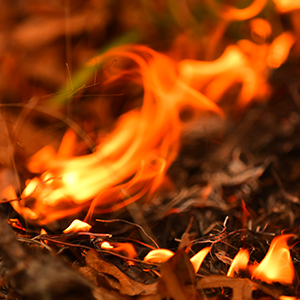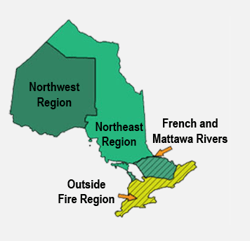 Recognizing Wildfire Season Risks
Recognizing Wildfire Season Risks
Wildfires are natural and annual occurrences. Despite the perception that wildfires only burn in late summer/early fall, major events have occurred in early spring, after the snow, but before 'green up.' One example is the Fort McMurray Wildfire in May 2016.
Canada records an average of 8,300 wildfires annually, with half of the cases caused by lightning and the other half by humans providing the igniting spark.
Wildland and urban interface conditions are characterized by topographical features, vegetation and fuel types, local weather conditions, and prevailing winds. When combined, the potential for buildings to ignite from flames and/or firebrands of a wildland fire are high. Also known as flying embers, they are the primary cause of fire spreading. As conditions become dryer and more people live in high-risk areas, the fires are getting bigger, more severe and costlier.
The recent MEARIE Conference held the session, Cutting Through the Myths of Forest Fires in Canada, presented by Glenn McGillivray, Managing Director, ICLR Adjunct Professor, Disaster & Emergency Management, York University.
Here are some highlights from his presentation:
-
- Canada is one of the most forested countries in the world, and wildfires are common
- Lightning causes about half of all wildland fires, with humans causing the other half
- More and larger fires are forecasted for the future
- Fire spread is mainly based on flying embers from wildfires
- Maintaining property premises and reducing the amount of flammable materials near buildings (e.g., fences abutting onto buildings, dry shrubbery, wood piles near buildings, etc.) is an important tactic to mitigate fire risk
- ICLR provides free loss control information

Is Your Company Operating in the Ontario Fire Region?
Ontario Regulation 207/96 Outdoor Fires was amended to include electrical power generation and utilities.
Companies operating in Ontario's Fire Region (right) are required to review their operations for fire risk and have fire prevention plans, training and equipment in place.
Fire season generally runs from April to October and peaks from May to August. To be prepared, your best protection against loss, damage or injury is prevention and mitigation. The primary focus needs to be on vegetation management, employee training and swift incident response practices2. Wildfires will always happen, and it is part of our lives. Identifying best practices and investing in ways to reduce risk are essential to managing the risks wildland fires pose better.
Ontario Fire Region Image: Source: www.ontario.ca/page/forest-fires
 Mitigating Heat-Related Injuries
Mitigating Heat-Related Injuries Recognizing Wildfire Season Risks
Recognizing Wildfire Season Risks
 Summer Students & Interns – Insurance Considerations
Summer Students & Interns – Insurance Considerations Preparing for Summer Festivals
Preparing for Summer Festivals